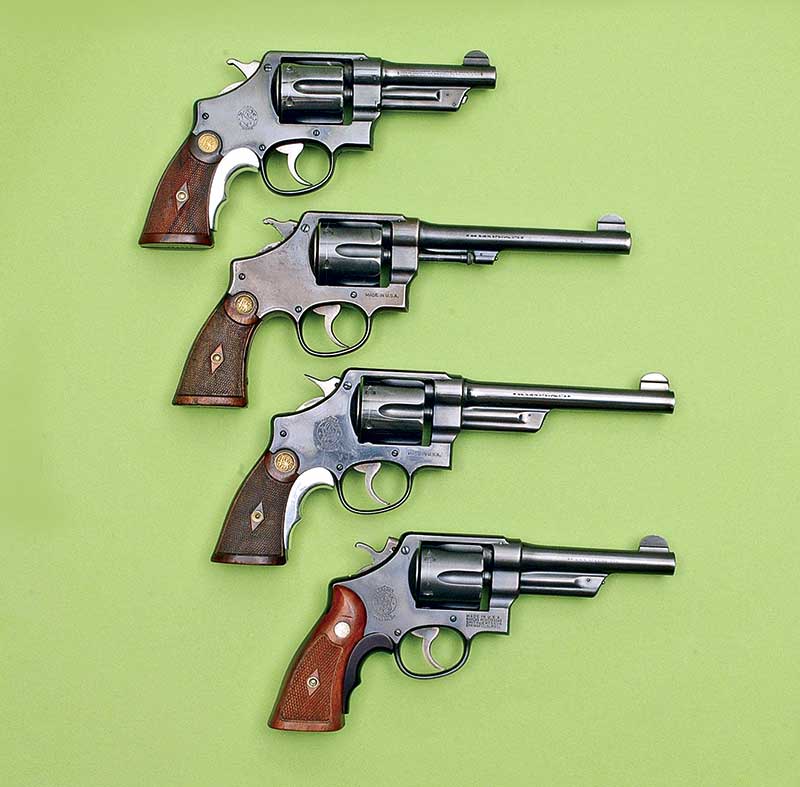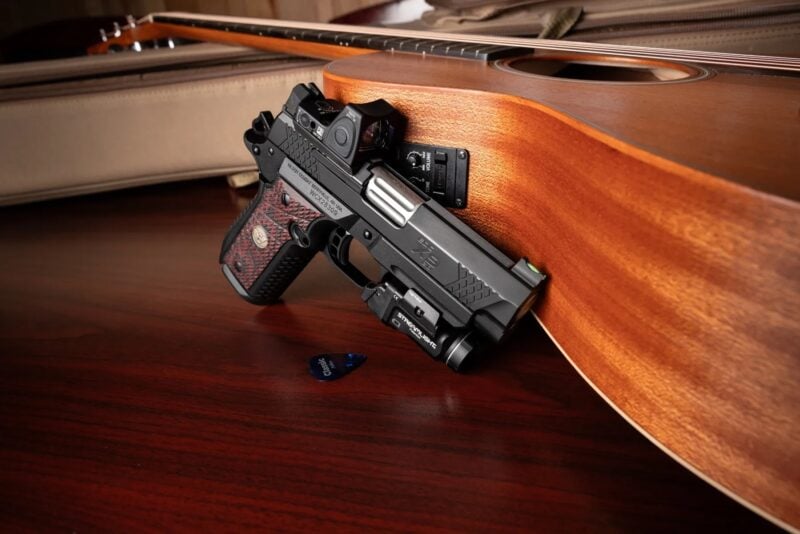EARLY S&W .44 SPECIALS
Over the years I’ve made no secret of my opinion there’s nothing really special about the .44 Special. It’s a fine old low-velocity, big-bore handgun round no better and no worse than several others. With that said, I’ll never be accused of mouthing anything but praise about the revolvers which Smith & Wesson chambered as .44 Special. They were exquisitely made handguns.
Spanning the era from 1908 to 1966, there were four basic ones — simply labeled by collectors as 1st, 2nd, 3rd and 4th Model Hand Ejectors. The 1st Model .44 Special was a milestone in two regards: it was the introductory vehicle for the .44 Special cartridge and it was also the first S&W revolver based on the large N-frame.
The 1st Model is often called the “Triple Lock” because S&W engineers designed an extra lock on the crane meshing with the frame upon cylinder closure. All swing cylinder S&W revolvers had front and back locks. No one seems to have given 2nd Model .44s a special name, but the 3rd Model was also called the Model 1926 for its year of introduction. The 4th Models had even more names. They were also called Model 1950 Military and Model 1950 Target. Starting in 1957 they became the Model 21 and Model 24 in the same order. It’s worth mentioning the first three models were also available with adjustable, target-grade sights. Fixed sights were the usual S&W half-moon front with groove in the topstrap for the rear.
Standard catalog barrel lengths of these .44s were the same throughout 58 years of production, with one small exception. All were offered in 4″, 5″ and 6.5″ lengths except the Model 1950 Target/Model 24. It was cataloged only with 6.5″ barrels. Understand one thing though; it’s possible to encounter non-standard barrel lengths because in those bygone days it was not uncommon for gun companies to accept special requests.
Ejector Rod Shrouds
Hand Ejector 1st Model .44s started out with shrouds beneath their barrels to protect ejector rods. Legend has it Smith & Wesson dropped the ejector rod shroud and crane lock at the behest of the British Government who claimed they would foul in the mud of World War I’s trenches. According to Roy Jinks, Smith & Wesson’s historian, those changes were already underway because the company desired to reduce the .44’s selling price. As introduced, the Triple Lock cost $21. In his book History of Smith & Wesson, Jinks writes both fixed and target sighted 1st Model .44s sold for the same prices. Eliminating shroud and extra lock enabled 2nd Models .44s to sell for $19. Presumably both target and fixed-sight versions were still priced the same.
The 2nd Models began production in 1915 but manufacture stopped for a couple years due to World War I’s demands by both the British and American governments. It started again in 1920 and ran till 1940. The 3rd Model (AKA Model 1926) was produced concurrently with the 2nd Model until 1940. In reality the 3rd Model was the same revolver as 2nd Model except the ejector rod shroud was reinstated, but not the third lock. Both 2nd and 3rd Model 44s were dropped during World War II, but in 1946 3rd Models returned until the 1950 versions appeared.

These four versions of S&W Hand Ejector .44 Specials also spanned the era from 1908 to 1966. All these .44s have standard fixed sights. Top: 1st Model (Triple Lock) with 4" barrel Second From Top: 2nd Model with 6.5" barrel Second From Bottom: 3rd Model (Model 1926) with 6.5" barrel Bottom: 4th Model (Model 1950 Military or Model 21 after 1957) with 5" barrel
Big-Bore Fighters
It seems these big-bore handguns were most popular in areas of unrest during their time of manufacture. For instance, it was a Texas based firm named Wolf & Klar that instigated the return of the ejector rod shroud by placing a huge order for them. Texas was still a pretty wild place in the 1920s. At the same time West Virginia’s Mingo County was the site of the vicious Coal Mine Union Wars. Growing up there in the ’50s and ’60s I was no stranger to S&W .44 Special revolvers. Used gun cases in pawnshops were full of them, although at that age I couldn’t tell a 1st Model from a 4th Model.
Over the decades I’ve owned multiple samples of all four versions of S&W HE .44 Specials in a variety of barrel lengths — even a super rare 4″-barreled “Triple Lock.” Most of them have been passed on to other owners now. The only two remaining in my vault are a target-sighted “Triple Lock” and a 2nd Model that factory letters to a West Virginia hardware store in the ’20s. Both have 6.5″ barrels. I get them out once in a while just to remind myself of how good old double-action revolvers were.
Subscribe To American Handgunner

Get More Revolver Content Every Week!
Sign up for the Wheelgun Wednesday newsletter here:





